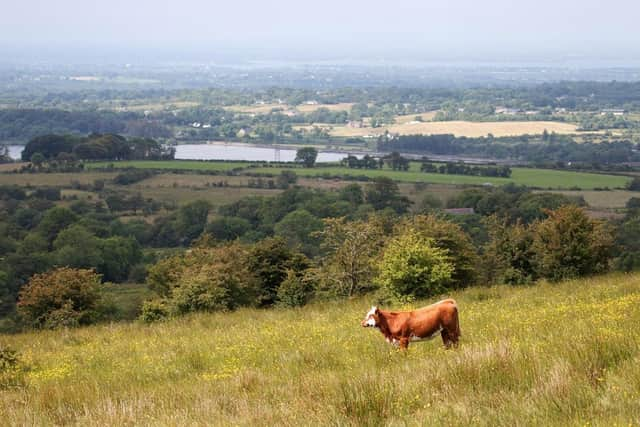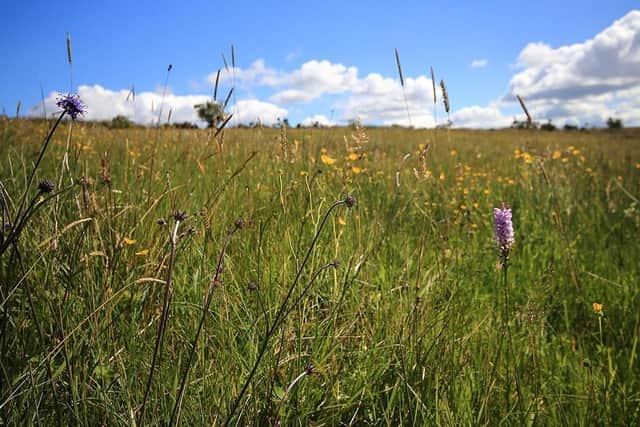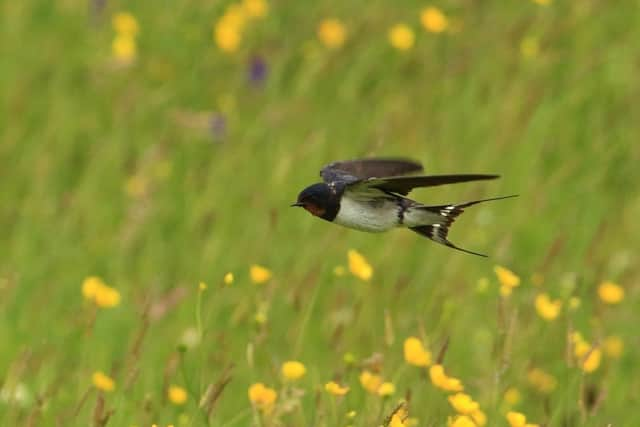First ‘super-sized’ nature reserve created near Lisburn in Belfast Hills
and live on Freeview channel 276
The move by local nature conservation charity Ulster Wildlife sees the expansion of its existing Slievenacloy Nature Reserve, which is just outside Lisburn, by 52% to 258 hectares, with the purchase of an additional 133 hectares of adjacent land.
Slievenacloy Nature Reserve is a designated Area of Special Scientific Interest and one of the best species-rich grassland sites in Northern Ireland, home to a host of diverse and fascinating wildflowers and wildlife – such as orchids, common lizards, waxcap fungi, and skylarks.
Advertisement
Hide AdAdvertisement
Hide AdFlower-rich meadows and traditional grassland habitats are one of Northern Ireland’s most important habitats but have suffered serious declines, as much as 97%, over the last 50 years. Those that remain exist as small fragments, making them particularly vulnerable.


By purchasing neighbouring grassland and peatland habitat, with potential for restoration, the charity plans to return the land to its former glory and bring it under long-term positive conservation management, as part of Slievenacloy Nature Reserve.
Partnership with local farmers is already underway to deliver nature-friendly grazing – a traditional and important component in caring for these special places.
The bigger nature reserve will help reconnect the landscape and provide a welcome boost for biodiversity, as well as offering a host of other benefits such as carbon storage, flood prevention, and buffering against extreme weather – essential ingredients to tackling and adapting to climate change.
Advertisement
Hide AdAdvertisement
Hide AdThe land purchase was made possible due to the generosity of funders, donors and supporters including the Department of Agriculture, Environment & Rural Affairs Environment Fund grant, gifts in Wills from Ulster Wildlife supporters, a donation from Moy Park, and philanthropic loans from Nick Marple, Andrew MacKay, Peter Solly and Julia Davies.


Agriculture and Environment Minister Edwin Poots MLA, said: “I am delighted that my Department was able to make a significant contribution of almost £600k through the Environment Fund to enable Ulster Wildlife to secure this additional land, substantially expanding the Slievenacloy Nature Reserve. I visited the Nature Reserve in 2020 to see the work carried out through an earlier project, also funded through the Environment Fund, which involved the upgrading of pathways and interpretive signage as well as the installation of accessible gates within the ASSI.
“In addition to the benefits this extension will bring to nature, it will provide the opportunity for facilities to be created in the future which will enable members of the public to enjoy the outdoors within this important piece of our landscape.”
Talking about the exciting land purchase, which is part of Ulster Wildlife’s long-term plans to bring nature back, Ulster Wildlife Chairman, Ken Brundle, said: “We need ambitious solutions to tackle the nature and climate crises. It is no longer enough to simply protect what remains of our wildlife - we must put nature into recovery and restore it for the future.


Advertisement
Hide AdAdvertisement
Hide Ad“Our brand new super-sized nature reserve in the Belfast Hills is a massive gain for nature conservation: it will create a bigger space for nature to thrive, and support biodiversity in the surrounding areas, creating a more resilient landscape.”
